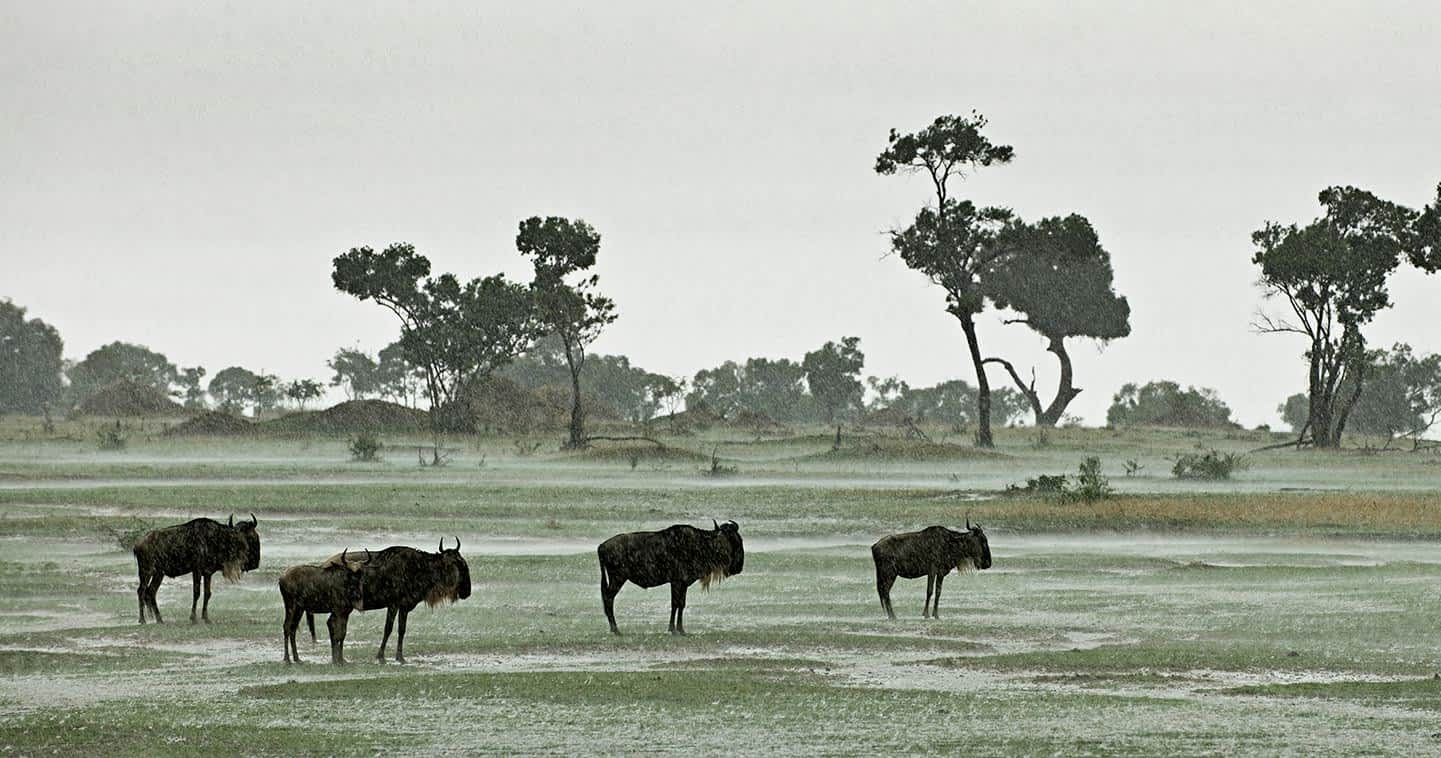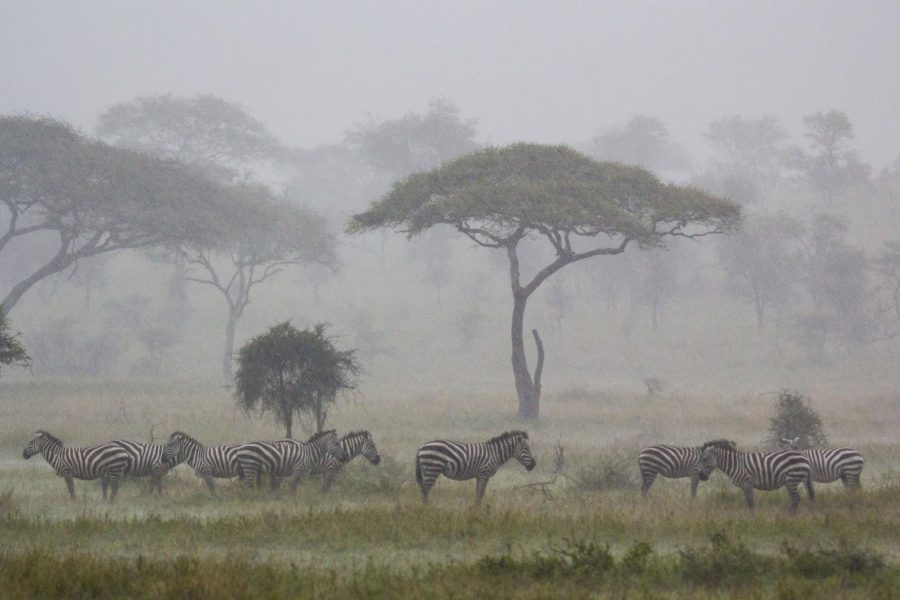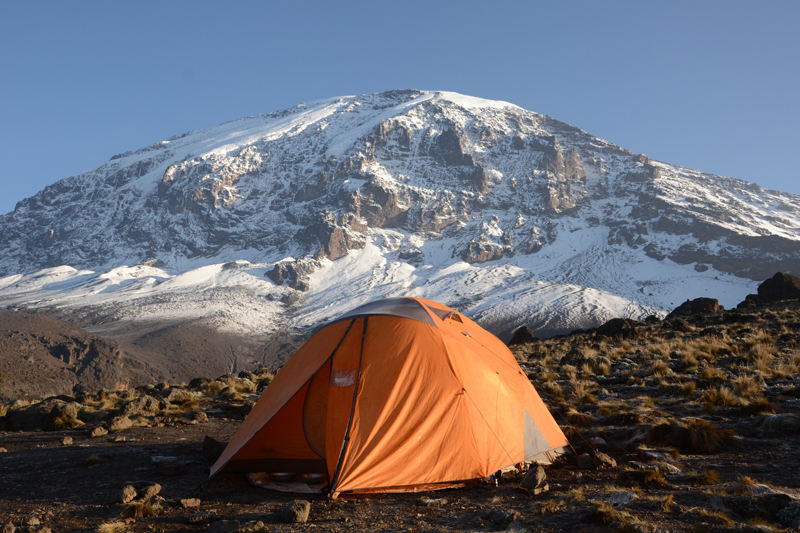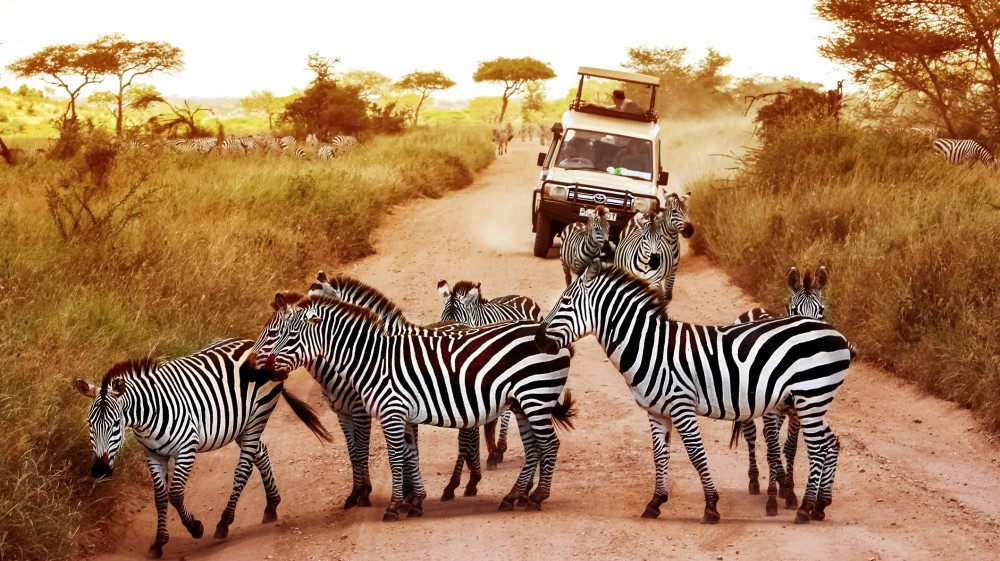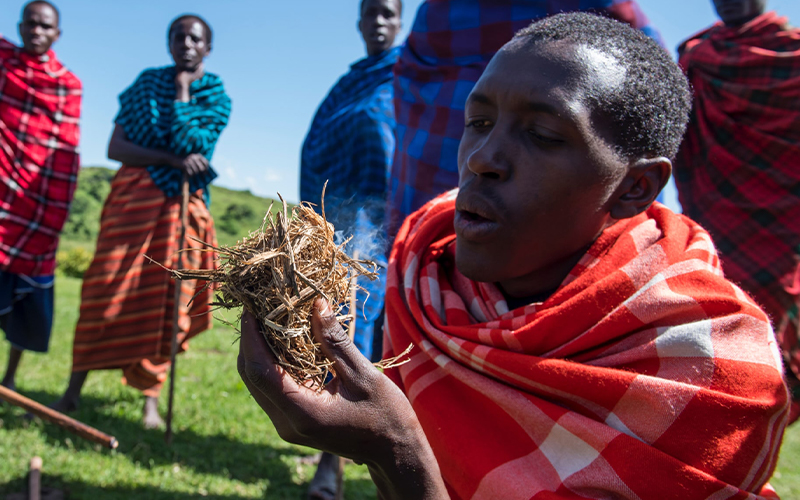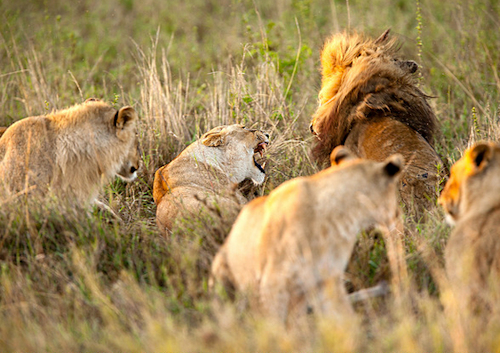The humble leader of the migration is the Wildebeest, known to be lacking in intelligence, earning it the affectionate moniker ‘clown of the plains’. In its defence, the Wildebeest is a successful team player and as a gregarious herbivore it reaches up to 1.5 million in numbers as part of the migration. Its intelligence and ability to survive in such a harsh environment as the East African bush lies in its strength in numbers - a super-herd in the seemingly never-ending circle of life of the Serengeti.
Accompanied by 200,000 zebra, 350,000 gazelles and 12,000 eland this strange wonder of the natural world circulates the Serengeti National Park in Tanzania and the Masai Mara Game Reserve in Kenya, its path dictated by rainfall and the resulting growth of grasses on the plains. There is neither a start nor finish to their journey; merely a relentless sequence of life and death. The only beginning is the moment of birth and the only ending is death - which can come only too easily in the migration.
The precise timing of the migration is entirely dependent upon the rainfall patterns each year. Nor is it confined to the un-fenced National Park, and instead seamlessly flows into the surrounding Game Reserves. Between January and March the Ngorongoro Conservation Area and Maswa Game Reserve, south-east of the Serengeti offer refuge during what is the short dry season thanks to its numerous rivers and spring grasses, allowing an opportunity for the Wildebeest to rest and give birth. Up to 400,000 calves are born in a synchronized birthing within just two to three weeks of one another! Unsurprisingly, this period presents a veritable feast for any accompanying predators - and the first challenge in the wildebeest’s life - with hundreds of hyenas and lions scattered across this area taking their chances with a potential glut of vulnerable newborns.
